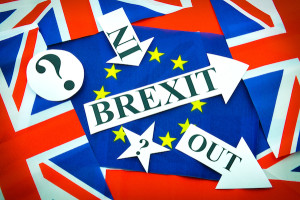Goldman Sachs Group Inc. is doubling down on its call that the pound has further room to depreciate.
While some analysts’ currency-valuation models show sterling looks cheap after hitting record lows, examining the pound from a perspective that incorporates Brexit’s impact on trade and the wider economy paints a different picture, Goldman argued in a note published last week. On that basis, sterling is still overvalued by as much as 10 percent, according to Goldman analysts Robin Brooks, Silvia Ardagna and Michael Cahill.
In research dated Oct. 25, the trio expand on their theory, arguing that the shocks of the U.K.’s decision to leave the European Union on the country’s current-account deficit — or the shortfall between money going out of the U.K. and money coming in — are a game changer in analyzing just where the pound will go.
“The signal that sterling is cheap ignores the ructions that Brexit may cause for the U.K. economy and — potentially — a drop in fair value,” the analysts write in their Oct. 25 note. “As a result, we use a different approach, which calculates the depreciation needed to bring the current account to a new, post-Brexit equilibrium.”
Sterling depreciation through October has probably taken the U.K.’s underlying current-account deficit from just over 6 percent to about 3.3 percent of GDP, they argue. Assuming a target shortfall of 1.5 percent as sterling depreciates and helps boost exports, they concluded that fair value for the pound lies somewhere 20 to 40 percent lower than its pre-Brexit levels.

